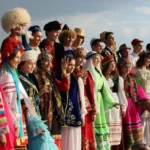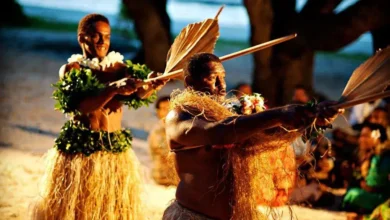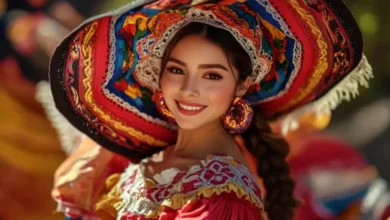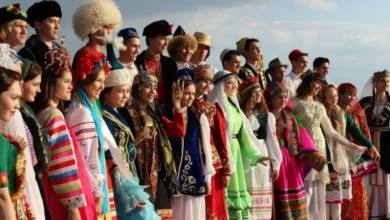Traditional clothing refers to the garments that are deeply rooted in the cultural, historical, and social practices of a particular community, region, or country.
These clothing styles are often passed down through generations, carrying with them symbolic meanings and reflecting the identity, values, and lifestyle of the people who wear them. Traditional clothing can vary greatly from one culture to another, and it plays an important role in defining cultural heritage and expressing individual or collective identity.
Defining Traditional Clothing
Traditional clothing is more than just a form of dress; it is an expression of culture and tradition. These garments are often associated with significant occasions such as festivals, ceremonies, rituals, and even daily life in historical contexts. Unlike modern clothing, which is often influenced by global trends, traditional attire remains deeply connected to the specific customs, climates, and social structures of a region.
Historical Context of Traditional Clothing
The history of traditional clothing is intertwined with the development of societies. In ancient civilizations, clothing was not only a necessity for protection but also a representation of social status, occupation, and even religious beliefs.
See also History of Traditional Clothing
History of Traditional Clothing
Traditional clothing often served as a means of distinguishing different groups within society, from rulers and priests to common folk and warriors. Over time, these garments evolved, influenced by changing cultural practices, external trade, and technological advancements in textile production.
Key Characteristics of Traditional Clothing
There are several characteristics that define traditional clothing, each reflecting the unique cultural, environmental, and social contexts in which it is worn. Let’s explore some of the most common features:
1. Cultural Significance
Traditional clothing is imbued with deep cultural meaning. The colors, patterns, and materials used in garments often carry symbolic significance. For example, in many cultures, certain colors represent specific virtues, seasons, or historical events. In some African cultures, brightly colored fabrics are used to symbolize celebrations and joy, while in Eastern cultures, specific garments may represent purity or wealth.
2. Use of Local Materials
Traditional clothing often makes use of locally sourced materials, reflecting the environment and economy of the region. For example, in cooler climates, wool or animal skins may be used for warmth, while in tropical regions, lightweight cotton or silk may be preferred for comfort. These garments are typically crafted from natural fibers like cotton, wool, silk, and linen, though synthetic materials are sometimes incorporated today.
See also Efforts to Preserve Traditional Clothing: Safeguarding Cultural Heritage
Efforts to Preserve Traditional Clothing: Safeguarding Cultural Heritage
3. Unique Styles and Designs
Each culture has its distinct traditional styles. The kimono in Japan, the sari in India, and the kilt in Scotland, for instance, are not only garments but also represent centuries of tradition, design, and craftsmanship. The designs of traditional clothing are often linked to specific cultural practices, such as embroidery techniques, weaving, and printing methods that have been perfected over time.
4. Functionality and Practicality
While many traditional clothing items are worn for ceremonial purposes, they are also designed with practical considerations in mind. For instance, nomadic peoples may wear garments that are easy to pack, durable, and adaptable to various weather conditions. In contrast, traditional attire in agrarian societies may be designed for ease of movement and comfort in physical labor.
5. Craftsmanship and Handwork
Traditional clothing is often handmade, with intricate techniques passed down from one generation to the next. The art of weaving, dyeing, stitching, and embroidering is central to the production of these garments. In many cultures, the skill involved in making traditional clothing is highly valued, and the process can take considerable time and effort. This craftsmanship is an essential part of preserving cultural heritage and ensuring the transmission of traditional knowledge.
Examples of Traditional Clothing Around the World
Traditional clothing varies greatly depending on the cultural context, geography, and climate. Below are a few examples of well-known traditional clothing from different parts of the world:
1. Kimono (Japan)
The kimono is a traditional Japanese garment known for its elegant, T-shaped design and wide sleeves. It is typically made of silk and is characterized by intricate patterns and vibrant colors. The kimono is worn on special occasions such as weddings, tea ceremonies, and festivals, with specific colors and styles representing different seasons, age groups, and occasions.
2. Sari (India)
The sari is a long piece of fabric, typically six to nine yards, draped elegantly around the body, worn by women in India and other South Asian countries. The sari is often paired with a blouse, and its design, color, and fabric can vary according to the occasion. The sari represents grace and beauty, and it is an essential garment in Indian culture, worn for both daily wear and special events like weddings and festivals.
3. Kilt (Scotland)
The kilt is a knee-length skirt-like garment, usually made of woolen cloth in a tartan pattern, worn by men in Scotland. Traditionally, the kilt is associated with Scottish heritage and is worn for formal events like weddings, ceremonies, and festivals. The kilt is an iconic symbol of Scottish identity and has become an internationally recognized representation of the country’s culture.
4. Dashiki (West Africa)
The dashiki is a colorful, loose-fitting garment worn by both men and women in many West African countries. It is often made from cotton and features bold, geometric patterns. The dashiki is not only a symbol of African pride but also a representation of social and cultural identity. It is commonly worn for special occasions and celebrations.
5. Áo Dài (Vietnam)
The Áo dài is the traditional Vietnamese dress, worn by both men and women, though it is particularly associated with women. It is a form-fitting tunic worn over long trousers, often made from silk. The Áo dài is known for its graceful, elegant appearance and is typically worn for weddings, festivals, and national celebrations.
Why is Traditional Clothing Important?
Traditional clothing holds great significance in preserving cultural heritage. It is a living symbol of a community’s values, customs, and beliefs, allowing future generations to maintain a tangible connection to their ancestors.
Traditional garments also help foster a sense of identity and belonging, as they serve as visual markers of a group’s history and unity. In many cultures, the act of wearing traditional clothing on special occasions reinforces social bonds and cultural pride.
Preserving Cultural Heritage
Traditional clothing plays an essential role in preserving cultural heritage. Many communities are working to keep traditional clothing practices alive by passing them on through education and training. The production of traditional garments is often linked to preserving age-old techniques, such as hand-weaving or embroidery, which might otherwise be lost in the face of modernization.
Fostering Unity and National Pride
Wearing traditional clothing, especially during national celebrations or festivals, fosters unity and national pride. It allows individuals to express their connection to their cultural roots and share that pride with others. In many countries, traditional clothing plays a crucial role in celebrating national identity, diversity, and heritage.
The Enduring Legacy of Traditional Clothing
Traditional clothing serves as a timeless representation of cultural identity, values, and pride. Whether worn for special occasions, daily life, or rituals, these garments are integral to the fabric of society. As globalization continues to shape the world, the importance of traditional clothing remains steadfast, serving as a reminder of the rich history, artistry, and craftsmanship that define diverse cultures worldwide.



